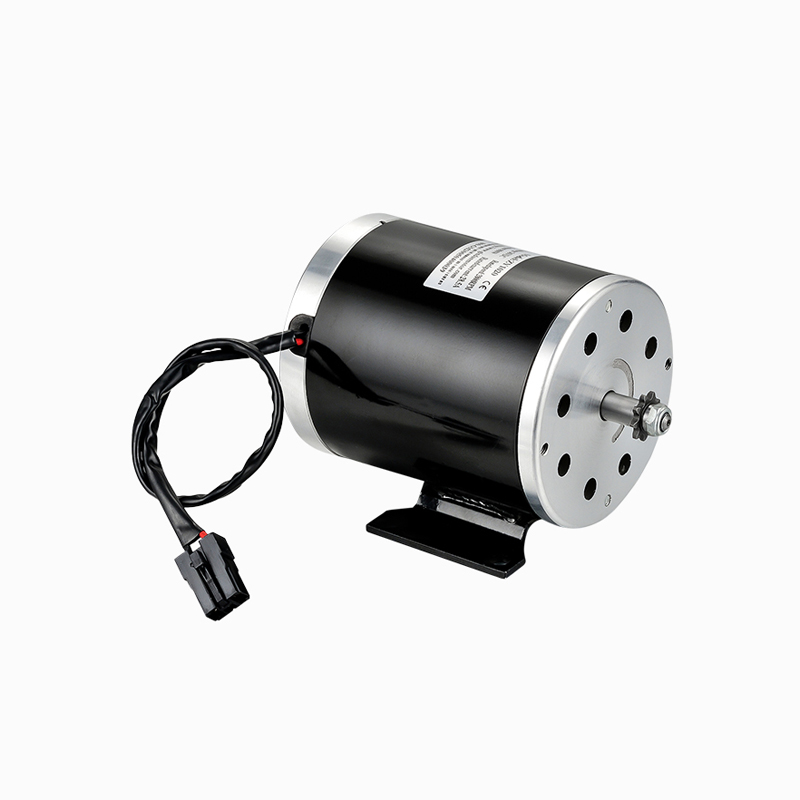Call us
+86-18023576732
+86-0579-89008006
Fax: +86-0579-82206899
Inherent Design for High Efficiency
The efficiency of a Permanent Magnet DC Motor is one of its notable strengths. Unlike traditional motors that require power to generate a magnetic field via electromagnets, this type of motor uses permanent magnets, eliminating field winding losses. This results in lower energy consumption and greater conversion of electrical input into mechanical output. Since magnetic fields are always present, the motor wastes less energy during startup and operation, contributing to overall higher system efficiency.

Low Electrical and Mechanical Losses
Electrical losses in motors often stem from current passing through resistance in windings and other conductive materials. A Permanent Magnet DC Motor reduces these losses by reducing the components responsible for electrical resistance. Additionally, the design typically involves fewer moving parts and, in brushless configurations, no physical contact between brushes and a commutator. This means there is less mechanical friction and wear, further decreasing energy loss and increasing operational efficiency over time.
Efficiency Across Varying Load Conditions
Efficiency in electric motors can vary depending on the load applied. One of the advantages of this motor type is its ability to maintain relatively high efficiency even under light to moderate load conditions. The use of strong, rare-earth magnets ensures consistent magnetic flux, which supports efficient torque generation. In many applications, such as electric bicycles, automation systems, or precision tools, the ability to sustain performance under fluctuating loads is critical, and this motor technology meets that requirement well.
Stable Operation at Multiple Speeds
Motor efficiency is also influenced by speed. A Permanent Magnet DC Motor demonstrates strong efficiency across a wide range of operating speeds. At lower speeds, it consumes less current due to reduced back EMF, while at higher speeds, the efficient use of magnetic fields continues to produce consistent torque. This flexibility is important in dynamic systems where speeds are adjusted frequently. It allows the motor to adapt without sacrificing energy efficiency, making it suitable for variable-speed drives and control systems.
Comparison with Other Motor Types
When compared to other types of DC motors, such as shunt or series wound motors, the Permanent Magnet DC Motor generally performs better in terms of energy efficiency. Its simpler structure and elimination of field excitation circuits reduce energy losses. Even when compared to some AC motors, it offers higher torque per watt, particularly in compact applications. This makes it a good choice in situations where power savings, compact design, and performance stability are critical.
Thermal Efficiency and Heat Reduction
High efficiency also translates to less heat generation. Because less electrical energy is lost in the form of heat, the motor stays cooler during operation. This enhances thermal efficiency, reduces the need for active cooling, and improves overall durability. Motors that run cooler tend to have longer lifespans and more stable performance over time. In enclosed systems where heat buildup is a concern, using this motor type reduces the risk of overheating and supports long-term reliability.
Conclusion: A Well-Optimized Motor for Energy-Conscious Applications
In summary, the efficiency of a Permanent Magnet DC Motor is a defining feature that makes it highly desirable across a range of industries. Its ability to reduce electrical and mechanical losses, perform well under varying load and speed conditions, and reduce heat output places it among the efficient motor options available today. As energy efficiency becomes a growing priority in both consumer and industrial technologies, this motor continues to offer practical advantages that align with performance and sustainability goals.
Contact Us